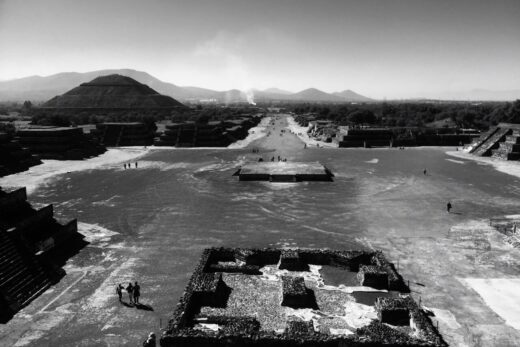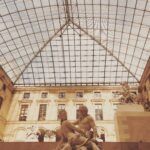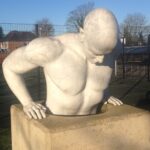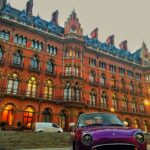A community’s sense of itself rests on its understanding of the past. Sharing this vision in the summer of 2013, Catch22 worked in partnership with Valence House (the local history museum in Dagenham) and University College London’s research team “Dig Where We Stand” to record the stories of people about living in the largest public housing estate in the world: the Becontree Estate.
Catch22 is a UK based social business with over 200 years’ experience of providing services that help people in the toughest of situations. Formed in 2008 by the merger of the charities Crime Concern and Rainer (previously the Royal Philanthropic Society), Catch22 runs services in more than 150 towns and cities in England, Wales and Northern Ireland. It aims to deliver social benefit and turn chaotic lives around; from steering clear of crime or substance misuse to doing they best they can in school or college, developing skills for work, living independently on leaving care or custody and playing a full part in their community.
For three years, I have been leading the community engagement services for Catch22 in the London borough of Barking and Dagenham running a range of programmes and building on local partnerships with various agencies and communities to support people across the borough. A committed small team in this Catch22 office in East London strongly shared the belief that when people become more positive and productive, the whole community develops and flourishes. Among a variety of regeneration, arts, environmental and social action programmes, I managed the Community Space Challenge All Ages, a national volunteering programme engaging young people at risk of offending with different age groups to lead on and deliver improvements to public spaces so they would become places for communities to use and enjoy. This programme was the catalyst to explore further possibilities of bringing together older and younger generations.
I was inspired by a grandmother in a forum of parents as part of the Community Space Challenge Programme. A grandmother aged over 70 and participant of the forum was speaking about the glorious past of the Becontree Estate, when she could enjoy spending time outdoors in the local parks without fear. The beauty of her narration let me think of ways to instigate the memories of the estate and allow diverse ages to learn from each other about their everyday places. My keen interest in museum learning motivated me to speak to the heritage manager of the Valence House Chris Foord, and then to apply for and successfully secure an All Our Stories grant from the Heritage Lottery Fund (HLF) for a community heritage project about the Becontree Housing Estate. ‘Stories of Becontree’ (as the project was called) was one of 70 regional projects out of a total of 542 successful projects funded by the HLF through the All Our Stories programme.
Becontree Estate is a large estate of approximately 4 square miles (10 km2) housing the vast majority of Barking and Dagenham’s population. In the interwar period, The Housing Act 1919 permitted the London County Council to build housing outside the County of London and Becontree was constructed between 1921 and 1935 in the parishes of Barking, Dagenham and Ilford in Essex. The official completion of the estate was celebrated in 1935 with 26,000 homes completed and a population of around 100,000 people. Most people had come there from the East End slums or were soldiers returning from the First World War. People who moved to Dagenham had, for the first time, running water, indoor toilets and private gardens. The large area was designed in ‘cottage garden style’ with uniform architecture and wide streets. A centre was never built and there was little commercial development and lack of social amenities to support the population. The building of the estate caused a huge increase in population density, which led to demands on services and reforms of local government. Until the opening of May & Baker and Ford Dagenham, parks, pubs and gardens formed a crucial component of the community life and were as important as the houses.
This community reality of the early days made the ‘Stories of Becontree’ project to focus on uncovering personal and family stories and exploring the urbanization and transformation of the Estate’s community spaces along the years. The aim was to record the life of the past and create a legacy for the local community in Dagenham by inspiring people to act together and improve their life of today. Due to the high levels of deprivation and illiteracy among population in Barking and Dagenham (this borough has the lowest average income in London Metropolitan Area), an oral history approach was seen as most appropriate to capture the stories of local people. The use of the medium of film has also been selected to creatively engage with young people and produce an output that lasts in time.
We ran the project between July and September 2013. Initially, 15 young people aged 14-19 living in different wards of the estate signed up and most of them (12) were committed for three months to taking part in the project. In addition to our community focus, the support of volunteers and the involvement of young people from disadvantaged backgrounds added more value to our project. Recruited or referred by a wide range of agencies (youth crime prevention services, social care agencies, targeted school units, local schools and colleges), young people became part of the group on a first come first served basis and the project was aided by an appointed film-maker and four volunteers who took on marketing, outreach and accreditation roles. The project finally formed and delivered a range of opportunities and activities for different ages to get involved in their local heritage.
- Using collections, archives and historical resources.
Working in close partnership with UCL’s Information Studies Department, Borough’s Archives and Local Studies Centre in the Valence House Museum, the project provided a bespoke four-day training as a course accredited through Trinity College and leading to an Arts Award Qualification. Young trainees had direct access to the archives and museum collections and developed research and interviewing skills with the support of PhD researchers and experts in community archives, oral history, film studies and the use of digital technologies in engaging the public in community heritage. The team worked at the museum site from the first day (having an introduction and a tour guided by the then borough archivist Tahlia Coombs) and spent a full day at the archives to provide young people with an opportunity to access historical material related to Becontree Estate, familiarize with different places and locations and create portfolios of old photographs. The People and Communities Gallery at Valence House Museum has a reconstructed Becontree Estate kitchen and living room along with photocopies of house plans, local newspapers, maps, photographs and a small cinema showing a rotating series of films about Becontree Estate (created by the Dagenham Co-Operative Film Society) that all were used as training resources. The delivery of the training sessions at the Valence House really helped maintain the strong commitment of the young participants due to the central location of the museum in Dagenham. It also ensured high quality of arts and learning provision throughout the three months of the project. Also, the workshop focused on oral history helped young learners put in practice interviewing skills, practicing spontaneous questions over the material and raising confidence while keeping records of these questions, their research process and personal notes.
- Talking to elderly people and holding sessions exploring people’s memories
With young people trained and ready to interview, we organised the reminiscence event “Tea and Tales about Becontree” at Valence House. The aim of the event was to explore the past with and talk to older generations so to unfold their life histories. Through local press coverage, social care homes and outreach work, 19 elderly residents of the Becontree estate attended the event. The average age of attendees was 81 years. We used a range of techniques, including old snapshots of young people’s portfolios, objects from the museum itself and people’s objects with personal meaning relating to this area (requested in advance with a letter) to get them on board and trigger their memories. The variety of methods provided valuable channels to help them remember, explore and give voice to their stories. The majority of them were coming from working class communities and they were not familiar with this kind of museum activities. In the end, a broad range of memories came to life during the reminiscence session: the heroes who returned from the war and found homes to live, the greenery surrounding their homes, the overflow in the estate, football memories, the pubs, social events and the bandstands in the local parks, the tough winter in 1962. Young people were part of the reminiscence session, listening to the first stories of the project, speaking to older participants and deciding on the older person they would like to interview. Bringing the generations together broke down barriers between different ages and enabled them to develop relationships in a creative and respectful environment before the home interviews take place. After the end of the reminiscence event, all participants had a meal together in the Oasis Café in the museum’s Visitor Centre. The lunch has been great at creating a memorable bridge between younger with older residents of the estate and building on a stronger sense of community.
- Recording people’s memories and community life
We documented in a film the stories of 14 elderly (6 men and 8 women) who remembered several events and experiences: from family stories, playful and touching moments in their gardens and outdoor spaces (Valence Circus and Parsloes park were among them) to weddings, working life, daily transportation and strong personal experiences (such as the loss of family members after a bombing of the estate at the second World War). The interviews took place mainly in their homes and only two happened at the museum and at Kingsley Hall. Young people were given the choice to act as film-makers or interviewers or both. At last, almost each young person interviewed at least one person of older age. The fact that they have met at the reminiscence event was really helpful to achieve a rapport not only between the participants (interviewers and interviewees) but also between the volunteers, museum and Catch22 staff members. The final film lasted 28 minutes long, documenting key stories of the whole journey of the project and including photographs, objects and shots by using all this material from the research stages to outdoor filming. In the last day of the project and with copies of old photographs in hand, young people actively searched for elderly’s people everyday places around the estate and filmed how they look today.
- Sharing the learning outputs and celebrating achievements with others
Supported by young people and other project volunteers, one volunteer fully dedicated his time on setting up a WordPress blog and running two social media channels (the Facebook page with the same title and a twitter account named BecontreeTales) to share news, updates, and the process throughout the time of project. The idea was to promote the living history of the Becontree Estate in visual digital forms and help us reach audiences locally and beyond, while creating a digital record of all project activities and events. Along with photos, reflections, notes, historical records, the documentary was uploaded on the website and Catch22’s YouTube channel. Additionally, a final DVD was produced and given out to people in Barking and Dagenham and two local screening events provided two different celebratory occasions to share the film with the local community. On Saturday 28 September, Catch22 launched the ’Stories of Becontree’ community film as part of the Local History Fair at the Valence House Museum. Also, a second screening event was dedicated to older residents and took place at Kingsley Church Hall at the heart of the Becontree estate on 1 October (Older People’s International Day). Young people, families and local people come in Kingsley Hall to enjoy a real community experience and celebrate the announcement of young people’s successful moderation and accreditation of their arts award qualifications though their participation in the project. A panel of older and younger participants who spoke about their participation and shared their experiences with the audience followed the screening of the film. In all events, a comments book captured the opinions of the viewers. The 30-min film was appraised about bringing the past stories of Becontree Estate into life through the voices of its original residents. The film, all interviews and their transcriptions were given and stored at the Valence House to be accessible to residents in Barking and Dagenham and pass to next generations and future researchers.
Looking back, I am pleased that we explored the subject of our interpretation with special knowledge and made a collective contribution to the heritage and local community of Barking and Dagenham. The partnership with the University College London (UCL) was highly productive by providing expertise, sharing knowledge and capacity building to anyone involved. Before the start of the All Our Stories programme, professors and doctoral students provided training to Catch22 staff and volunteers and helped with resources and activity tools. The team of the researchers from UCL were keen on taking a more collaborative approach to community heritage and sustaining broad participation particularly amongst young people in interpreting and oral history activities. One of the doctoral students, Anna Sexton reviews her experience here.
We also succeeded in reaching and documenting some stories of senior residents in the Becontree estate before their narratives being permanently hidden, from life and history. The project also involved people of diverse ages and backgrounds and enabled them to see their everyday spaces in a different light. Three factors played significant role on the successful delivery of our All Our Stories programme: my postgraduate museum educational studies and my drive to explore and understand the past of this area on the crossing border between London and Essex with younger generations; secondly, good communication and balanced partnerships with the Valence House and UCL’s research team; and thirdly, the active involvement of project volunteers, Catch22 youth workers and especially the hard work of film-maker Patricia Gomes who was excellent at capturing the essence of the stories in a half hour out of 18 hours of final filming time. The use of digital technologies, press coverage, easy funding procedures and the accredited training qualification were also important elements of the Stories of Becontree project. The challenges were the lack of previous similar cross-sector work at the local level, difficulties with the public transport, our limited budget and minimal support from some other council departments (except youth and heritage). But we were passionate about working together and creating a range of best practices and interdisciplinary approaches to community heritage, intergenerational learning, digital media and film.
The Heritage Lottery Fund also opened new perspectives for Catch22 office in Barking and Dagenham and the partnership with the heritage and higher education sectors let the team consider more options on the delivery of high quality services at the local level. Building on the challenges and successes of the first partnership, Catch22 was selected by UCL’s research team as one of the best projects (only two invited out of 17) to be part of the Research for Community Heritage Summit on 23 October 2013. The Summit was a collective of university teams, All Our Stories grant holders who had been working with universities, National Co-ordinating Centre for Public Engagement (NCCPE), the Arts and Humanities Research Council (AHRC) and the Heritage Lottery Fund (HLF).
Storytelling was proved to be an excellent way to engage not only different generations but also disciplines and partners to transform the lives of younger and older people in Barking and Dagenham. Community, as English historian Arnold Toynbee said, “is a movement and not a condition, a voyage and not a harbour”. For the future of this community, Stories of Becontree remind us the constant changes that happen in life through diverse ages and voices and the beauty to interpret and learn more about the past in Barking and Dagenham.
Image on the left: Detail of the Becontree Estate Mural at Valence House created by Chad McCail a year after the Stories of Becontree Project.












